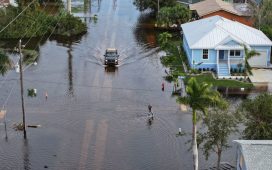Extreme weather events are expected to lead to volatile food prices throughout 2025, supply chain analysts have said, after cocoa and coffee prices more than doubled over the past year.
In an apparent confirmation of warnings that climate breakdown could lead to food shortages, research by the consultancy Inverto found steep rises in the prices of a number of food commodities in the year to January that correlated with unexpected weather.
Several authorities declared 2024 the hottest year on record, a trend towards higher temperatures that seems to be continuing into 2025. Inverto said a long-term trend towards more extreme weather events would continue to hit regional crop yields, causing price spikes.
The highest price rises were for cocoa and coffee, up 163% and 103% respectively, due to a combination of higher than average rainfall and temperatures in producing regions, according to the research.
Sunflower oil prices increased by 56% after drought caused poor crop yields in Bulgaria and Ukraine, which also continued to be affected by the Russian invasion. Other food commodities with sharp year-on-year price rises included orange juice and butter, both up by more than a third, and beef, up by just over a quarter.
“Food manufacturers and retailers should diversify their supply chains and sourcing strategies to reduce over-reliance on any one region affected by crop failures,” Katharina Erfort, of Inverto, said.
after newsletter promotion
In December, the UK government said climate breakdown and related food price inflation was leading to a rise in the number of hungry and malnourished households.
Climate scientists said Inverto’s findings were in line with their expectations.
“Extreme weather events around the globe will continue to increase in severity and frequency in line with the ongoing rise in global temperature,” said Pete Falloon, a food security expert at the Met Office and University of Bristol.
“Crops are often vulnerable to extreme weather, and we can expect to witness ongoing shocks to global agricultural production and supply chains, which ultimately feed into food security concerns.”
Max Kotz, of the Potsdam Institute for Climate Impact Research, said data showed heat extremes were already directly affecting food prices.
“Last year showed numerous examples of this phenomena playing out in real time, as extreme heat across east Asia drove substantial increases in the price of rice in Japan and vegetables in China,” he said.
“Market commodities were also strongly affected, with extreme heat and drought across cocoa-producing west African countries and coffee-producing regions in Brazil and Vietnam driving strong increases in prices. Until greenhouse gas emissions are actually reduced to net zero, heat and drought extremes will continue to intensify across the world, causing greater problems for agriculture and food prices than those we are currently facing.”








